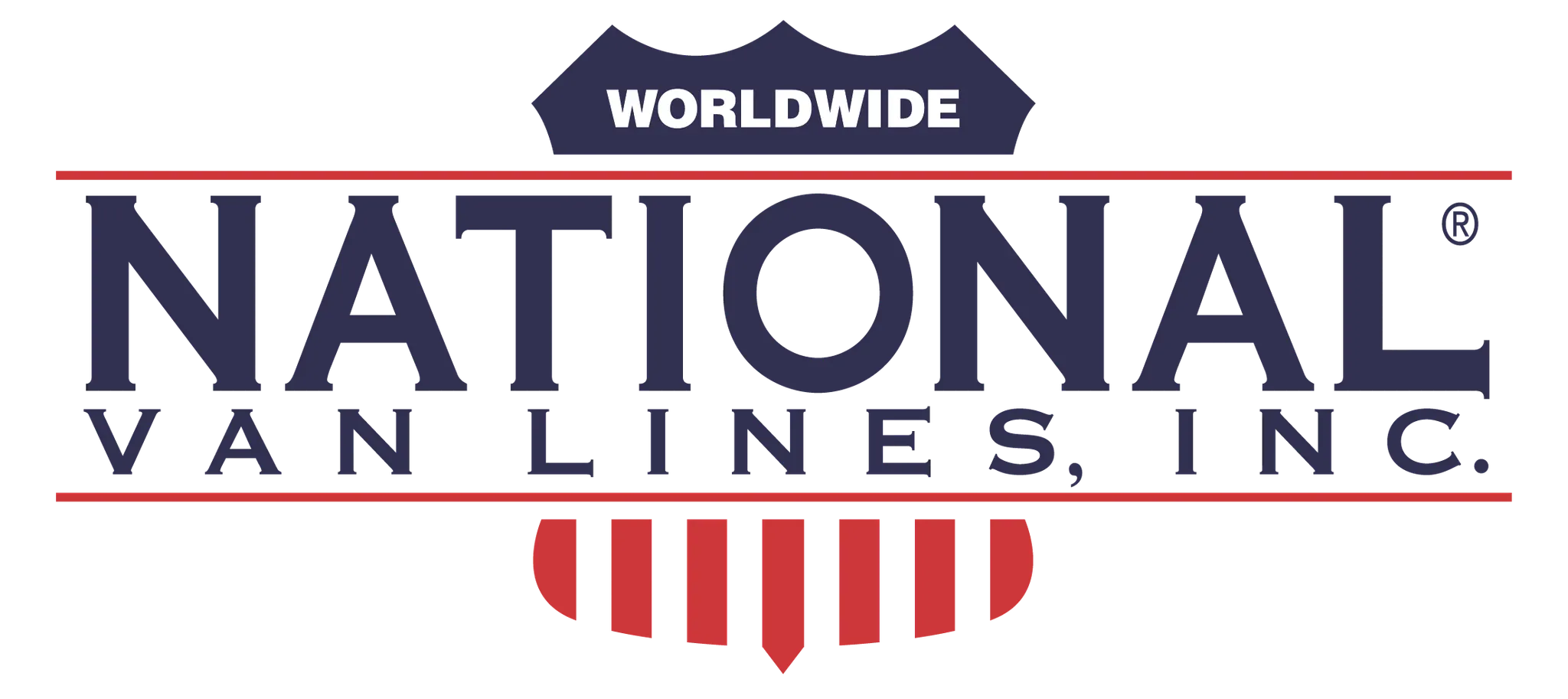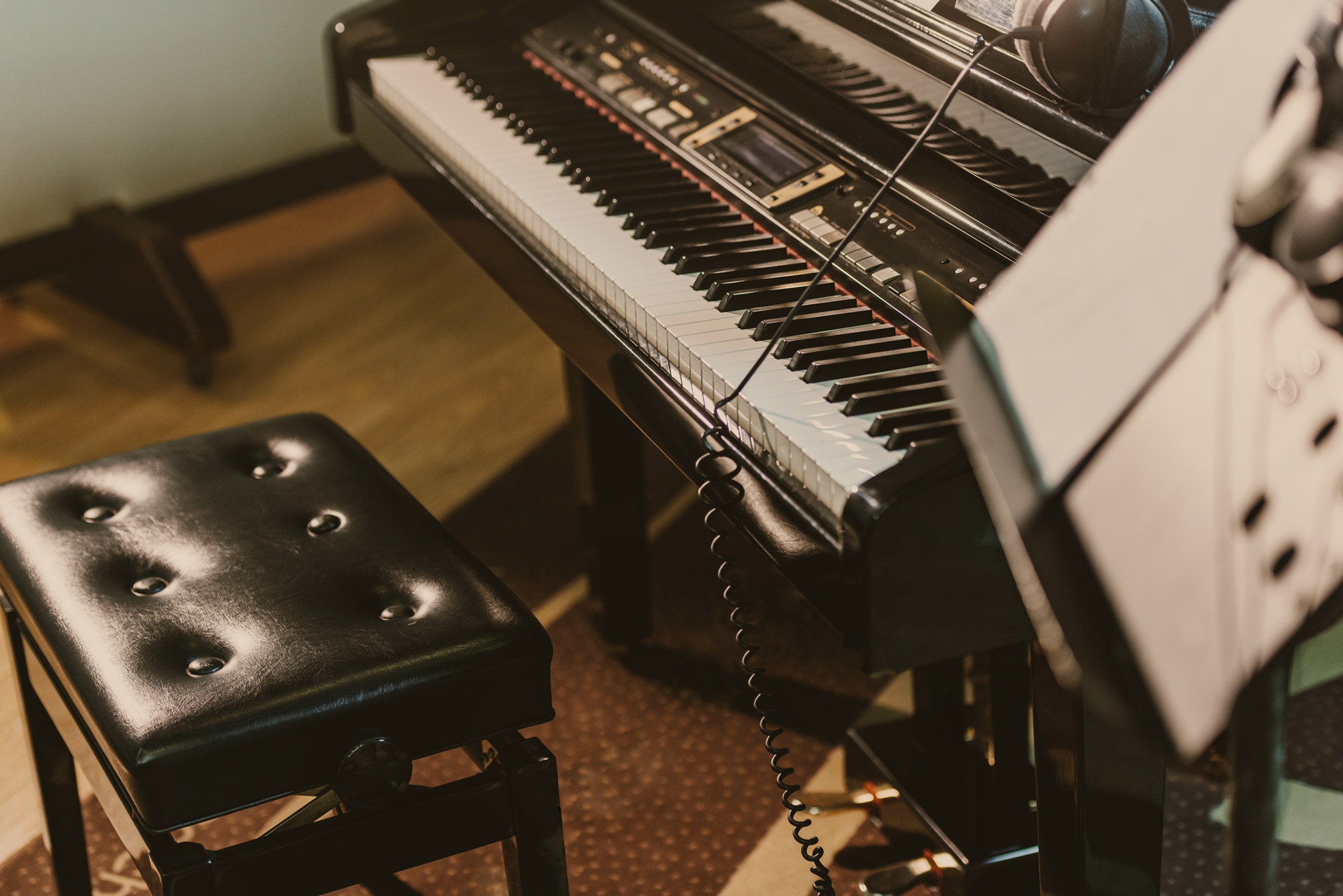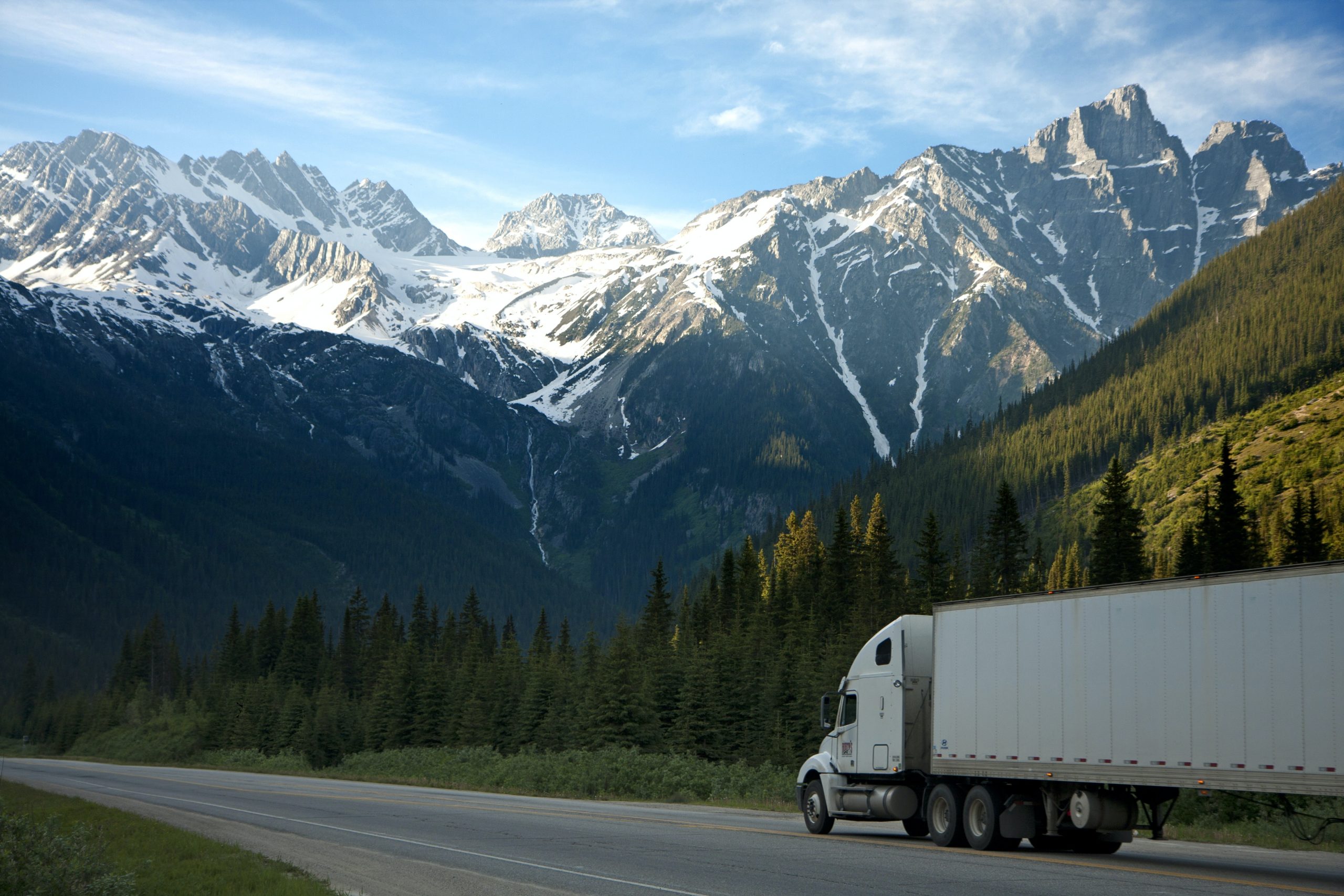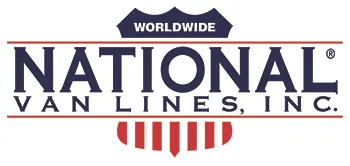How to Move a Piano in Tacoma
Whether it’s an upright that’s been in the family for generations or a sleek baby grand waiting to be the centerpiece of your new space, a piano isn’t just another piece of furniture. It’s a precision instrument, often worth thousands of dollars, and one wrong move while attempting to transport it can damage both the piano and your home, not to mention your back.
While professional piano movers use years of experience, specialized equipment, and coordinated teams, a lot of people still try to do it themselves to save money. That choice can come at a high cost.
Hi, I’m Shannon Webb, and I have been General Manager of Mountain Moving and Storage in Tacoma for 18 years, supporting our expert team of movers on a variety of specialty moving jobs, including piano moves.
Thinking about tackling the move of a piano on your own? This guide covers every key step, from prepping the piano and selecting the right equipment to loading techniques and safe transportation. We’ll also talk about when it makes sense to stop trying to complete a move on your own and call in the pros. Ready to move smart?
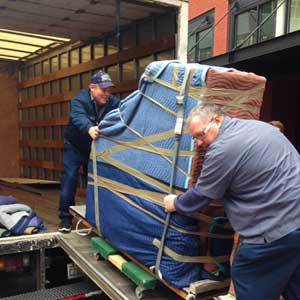
Get That Piano Ready to Roll
Before a single strap gets tightened or blanket laid down, the piano itself needs prepping. The goal is simple: prevent scratches, internal damage, and shifting parts during transport.
The payoff? A piano that lands in its new spot looking and sounding just like it did before the move.
Close and Secure the Keyboard Cover
Start with the most delicate part: the keys. Every upright or grand comes with a keyboard lid. Slide or fold it down, depending on the model, and make sure it stays shut.
If it doesn’t lock clasp-tight on its own, use a soft strap or bungee cord to keep it from flying open mid-move. Avoid running metal latches or hooks across your pianos finish. Residue is a nightmare to clean off lacquer or polished wood.
Wrap the Entire Instrument in Moving Blankets or Padding
Blankets serve two purposes: they safeguard the finish and cushion impacts during transport. Use thick, quilted moving blankets to completely wrap the piano’s body.
Don’t just drape one over the top and call it done. Start from the base, working your way up and around, layering padding to cover protruding edges, especially legs, pedals, and the corners of a piano’s lid.
Secure the Covers with Straps or Shrink Wrap
Once padded, lock everything in. Tie ratchet straps or stretch plastic wrap tightly around the body. If using wrap, start at the bottom and spiral upwards, making sure there are no slack spots.
Straps should be snug, but not too tight. Check for secure tension. Blankets shouldn’t shift if you tug on them lightly.
Label Any Disassembled Parts
Removing pieces like music stands, lyres, or legs? Label those immediately. Use masking tape and a marker to tag each part: “left leg,” “pedal system,” “upper lid support.” Then place hardware like washers, bolts, and screws in small bags, label those too, and tape them to the corresponding part. You’ll thank yourself when you’re not crawling around later, trying to match mismatched bolts to mystery brackets.
Once the piano is fully padded, secured, and labeled, it’s ready for the move. Whether you’re moving a piano from one room to another or across Tacoma, smart prep saves time and stress.
Gear Up: The Tools That Make Piano Moving Possible
Dragging a piano across a room won’t cut it. According to Moversville, these instruments weigh anywhere from 200 to over 1,000 pounds, depending on the type. Always consult with a licensed mover or medical professional before attempting a heavy-lift move if you have prior injuries.
Piano moving without the right gear sets up everyone for injury, frustration, and damaged floors. Here’s exactly what you’ll need.
Heavy-Duty Piano Dolly and Straps
A standard furniture dolly won’t hold up. Upright pianos require a four-wheel heavy-duty dolly, while grand pianos need a specialized skid board, often referred to as a piano board. Combine that with heavy-duty ratchet straps to keep the instrument securely in place during transport. Ideally, these straps should be rated for at least 1,000 lbs of tension force.
BuyeReviews has a comparison of ratchet straps you might want to take a look at if you need help deciding on which to buy. Don’t just wrap and hope; anchor the piano to the dolly so it moves as one unified load.
Work Gloves and Back Support Belts
Traction and grip during a move is vital. Non-slip work gloves help with handling the piano,especially on ramps or around corners. Back support belts reduce strain during lifting, particularly when repositioning parts of the piano or pushing up inclines. Even with correct lifting posture, belts provide relief during extended moves or tight-angle navigation.
Screwdrivers, Wrenches, and Basic Tools
Some pianos, especially grands, need partial disassembly. Legs, pedals, and music racks are typically removed for a safer, more compact transport. Flathead and Phillips screwdrivers, Allen wrenches, and socket sets should all be on hand. Keep a sealable bag ready for loose screws and hardware. Label everything to make your life easier when it’s time to reassemble.
Ramps or Stair Climbing Equipment
Steps and thresholds don’t have to be obstacles, but they are without the correct tools. Use portable moving ramps for loading into vehicles and navigating stairs. For taller staircases, a commercial-grade stair climbing dolly (electric or manual) gives controlled ascension and descent. Your best bet would be to rent one of these tools for around $150 for four hours.
These typically support up to 1,200 lbs and feature braking systems for added safety.
Have you already checked your gear list? Missing one of these tools could turn a routine piano move into a logistical nightmare. Better to be over-prepared than to face a sudden “now what?” moment mid-staircase.
Master the Lift: Teamwork and Technique for Moving a Piano
Moving a piano isn’t a solo mission. The size and awkward weight distribution demand more than brute strength. It requires methodical teamwork and precise lifting techniques. Here’s how to get it right without tipping, straining muscles, or taking a chunk out of the drywall.
Build the Right Team in Tacoma
Three people can usually handle an upright piano on flat surfaces. Grand pianos, heavier uprights, or complex stair moves call for at least four, maybe five movers.
More hands allow each person to carry less weight and balance the instrument with better control.
- 3 movers: Suitable for smaller upright pianos with straight-line moves across flat flooring.
- 4-5 movers: Better for grand pianos, baby grand pianos, tight doorways, stairs, or when navigating long distances.
Shift in Unison: Slow, Steady, and Synchronized
Misaligned movement turns a controlled lift into a chaotic lurch. Before hoisting anything, agree on basic commands like “lift,” “pivot,” or “rest.” The lead mover speaks; the others respond.
Raise and lower the piano in unison using slow, fluid motions with no sudden jerks.
Think of it as a choreographed dance, not a strongman competition. Rushing introduces risk. Moving slowly keeps balance and communication in check and gives reaction time if someone loses grip.
Lift with your Legs
Bend at the knees, not your waist. That single adjustment saves your spine from overload. Your legs have powerful muscle groups built for lifting; your back doesn’t. Keep the back upright, grip low on the piano, and push up using your legs in one smooth motion.
Feeling strain in your lower back? You’re doing it wrong. Shift your form or switch out with a teammate. Safety and stamina stay higher with proper technique.
Designate a Lead Mover
Every team needs one voice calling the shots. The lead mover should have a clear view of the path ahead. They give instructions on timing, adjustments, when to pause, and how to pivot. Everyone else listens. Eliminating ambiguity ensures aligned effort and avoids cross-directional movement.
No debates mid-lift. Once the lead issues a call, the team acts as one.
Got your team lined up and roles defined? Great, now you’re ready to tackle stairs and door frames like a professional piano mover.
Getting It Rolling: Transporting the Piano in a Vehicle
Now that the piano is padded, strapped, and ready, the next phase starts: getting it into the truck and making the journey without any damage. Here’s where making sure you have the right vehicle for the job and solid securing techniques is key.
Pick the Right Truck for the Job
Don’t try to squeeze a piano into a van or pickup. Upright or grand, both demand space and stability. Choose a box truck that’s at least 16 feet long. You’ll need the extra room not just for the piano, but for maneuvering and securing it properly.
And skip the ramp. Go for a truck with a hydraulic lift gate. Trying to push a piano up a ramp invites disaster. With a lift gate, you’ll keep the platform level while raising it into the truck bed, critical for avoiding internal damage.
Positioning and Securing the Piano
Once inside, keep the piano against a side wall inside the truck, not in the center. Uprights should stand on their base; grands should lie flat on a skid board. Never tilt or lay the piano on its side unless the model requires it during professional relocation.
- Use ratchet straps to anchor the piano directly to the wall-mounted anchor points. Don’t rely on rope or twine. Ratchet straps let you control tension, keeping the instrument locked in place.
- Add padding and moving blankets around the body to serve as insulation against bumps and vibrations. Tuck foam blocks or extra blankets between the straps and any hard edges to prevent scuffs and pressure points.
- Use bungee cords strategically to tie off any moving parts or to secure blankets, but don’t use them as substitute tie-downs for the piano itself. They’re too flexible to hold something this heavy.
Mind the Orientation
Whenever possible, keep the piano in its normal upright orientation. Tilting or placing it on its side may upset the internal mechanics or damage the harp and soundboard. If the size of your instrument, or the truck’s capacity, requires tilting, consult the manufacturer’s specs or a piano specialist about safe angles for transport.
These tips apply whether you’re figuring out how to move an upright piano through a small doorway or a baby grand piano across town. Now, let’s talk about when to bring in the experts.
Hiring Professional Piano Movers
When DIY Doesn’t Cut It
Some situations flip the switch from “we’ve got this” to “call the pros.” Moving a grand piano down a spiral staircase? Transferring an upright from a high-rise with no elevator access? Crossing state lines with tight timelines?
All of these scenarios demand more than muscle. They require precision, experience, and the right equipment.
Even smaller upright pianos can weigh over 300 pounds, while full-size grands easily push past 1,000. One misstep on a staircase or a poorly secured dolly on a ramp doesn’t just risk breaking the instrument; it risks injury.
What Separates a Piano Mover from a Mover with a Truck
Not every moving company is qualified to move pianos. Here’s what sets legitimate Tacoma piano movers apart:
- Dedicated equipment: They’ll use heavy-duty piano dollies, leverage boards, specialized padding, and custom skids built for piano bases, tools general movers usually don’t carry.
- Specialized training: Certified piano movers understand internal piano mechanics. They know how to disassemble and reassemble components like lyres or legs without damaging tuning pins or cabling.
- Insurance coverage tailored to pianos: Coverage spans both property damage and the full declared value of the piano, useful if you’re moving a $15,000 Steinway.
Questions to Ask Before Signing Anything
Before locking in a Tacoma mover, ask them these crucial questions:
- How many pianos have you moved in the last year? The answer reveals experience, not just longevity, but frequency.
- Are you fully insured for piano moving? Request proof of both liability and cargo insurance. General policies aren’t enough.
- What equipment will you use for my move? Expect specifics like stair-climbing dollies, locking belts, and custom pressboard skids.
- Can you provide references? Clients who moved valuable baby grands or antique uprights are the voices that matter most.
Elevators, Flights of Stairs, and Long Hauls: Why Pros Make Sense
Moving pianos on staircases requires more than just demand power; it requires control. A piano cannot pivot or lean like a couch. Professionals apply refined techniques, like three-person pivot turns on platforms or skid board descents with purposeful strapping. These methods protect internal harp frames and avoid the costly consequences of internal damage.
For long-distance moves, professional Tacoma piano movers use climate-controlled trucks and secure mounting to prevent shift damage. They also understand how to balance a piano’s weight across transport axles, something general carriers may miss entirely.
Thinking about recruiting friends and YouTube tutorials for a multi-story relocation? Ask yourself: what’s the replacement cost of the piano, and how many stair landings are you ready to gamble?
What Moving a Piano Really Costs And How to Budget for It
Whether you decided to go the DIY route or hire movers, here’s what the price of your job could look like.
What You’re Paying for with Professional Piano Movers
Hiring professionals simplifies logistics and reduces liability, but it’s not cheap. According to Angi.com, average national costs in the U.S. range from $259 to $590 for upright pianos moving locally. Grand pianos often start at $400 and can go over $1,000, especially with stairs involved or long-distance transportation.
- Local upright piano moves: $250–$400
- Grand piano, same city: $400–$700
- Long-distance shipments: $700–$2,500+, depending on mileage and weight
- Extra services like disassembly, hoisting, or climate-controlled transport add costs fast
Companies often offer flat rate estimates, but some charge by the hour (typically $90–$150/hour for a two-person team), so ask detailed questions.
Weight, stairs, permits for urban zones, and required insurance all influence the final quote.
Going DIY? Here’s What That Bill Looks Like
Trying to save by handling the move yourself? That approach requires equipment rentals, packing materials, and transportation, none of it free.
- Piano dolly rental: $210–$300/day
- Moving blankets and wraps: $30–$80
- Ratchet straps and padding: $15–$40
- Truck rental: $90–$150/day, or more for long-distance trips
- If hoisting or ramps are needed, expect additional rental costs of $75–$200
Add it all up, and a DIY move can total $300–$500 easily, especially if there’s stair navigation or you need to buy rather than borrow materials.
The Hidden Costs You Might Overlook
Risk is expensive. Dropping a piano or injuring someone in the move can translate into thousands in property damage, medical fees, or piano repairs.
A cracked soundboard or a damaged pinblock isn’t fixable without a serious investment or replacement. Retuning, even without damage, is nearly always needed after relocation and averages $100–$200 according to HomeGuide.
When the Math Justifies Hiring Movers
Here’s a question worth asking: What dollar number equals peace of mind for you? If your piano is a family heirloom, a concert-grade grand, or sits in a tricky space with stairs or sharp turns, then professional movers aren’t just a convenience.
They become the smarter choice when comparing the cost of damage to the price of expert handling.
On the other hand, if your upright piano needs to travel just a few blocks, and you’ve got strong help and proper tools, DIY remains an option, with risks that you’re willing to manage. However, remember that repairing a broken leg or a cracked lid can quickly wipe out any budget savings.



